
Futuristic community with 11 towers to completely transform stretch of Oakville
Some wild plans have emerged to transform a 15.32-hectare tract of empty fields and a stormwater pond at the north edge of Oakville's urban sprawl, calling for a net-zero, mixed-use, transit-oriented development that looks like something Hollywood art directors conjured up for the set of a science fiction movie.
Located at Third Line and Dundas Street West, the proposed Oakville Green Life Sciences and Technology District would rise above the monotony of suburbia with 11 towers as high as 33 storeys, featuring a cutting-edge masterplan design from architects Gensler that reads as a clustered crystalline growth sprouting from the city's edge.
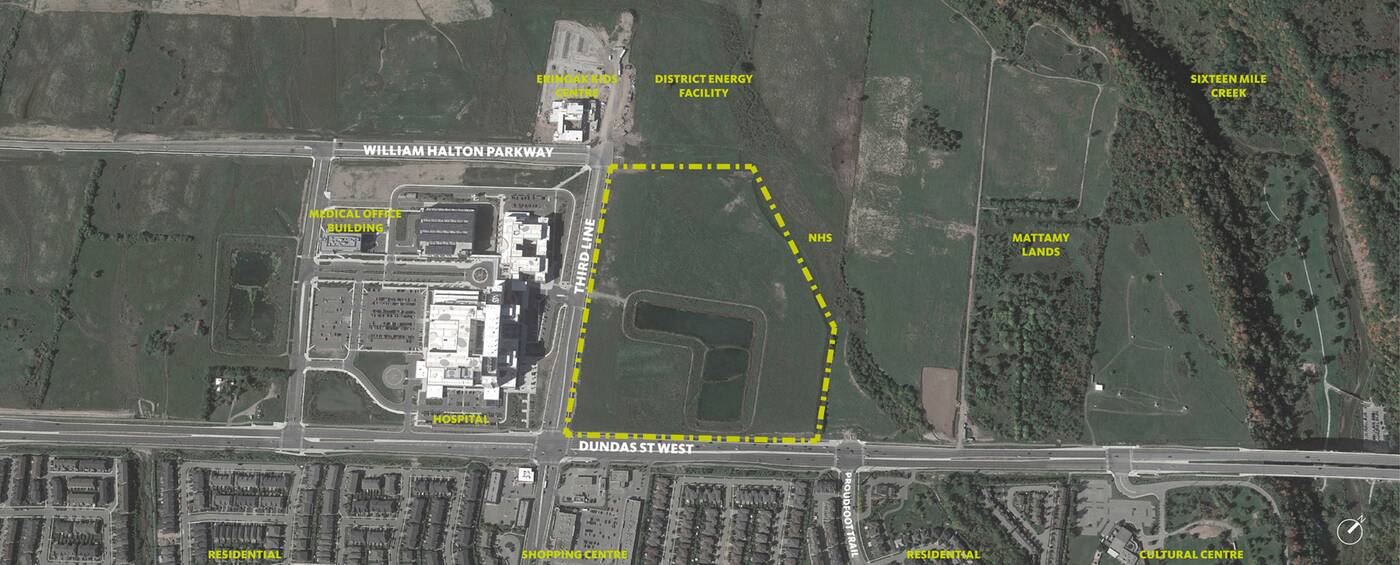
Queensgate Homes and Oakville Green Development Inc. have produced a website outlining their bold vision for a "world-class community" that they envision will be a sustainable innovation district anchored by the adjacent hospital and supported by its own green energy production facility with a goal towards net-zero development.
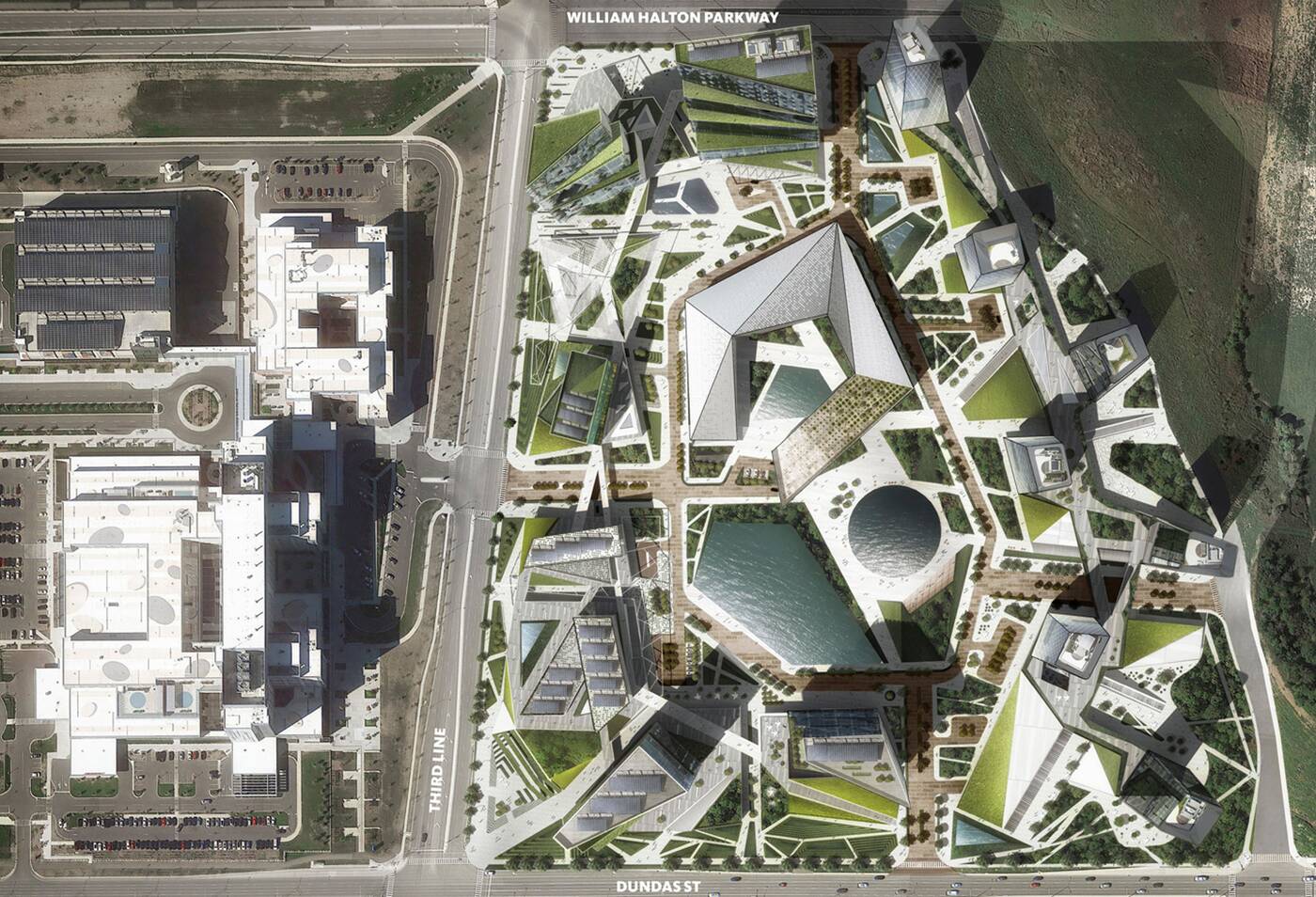
The district plan is designed from the ground up as an urban employment community leveraging the existing hospital next door, anticipated to act as an employment accelerator, with a mix of residential, commercial, health care, and educational building uses across five development blocks.

The plan intends to draw in healthcare professionals and innovators for both employment and housing, planned with a ratio of three primary and one secondary employment job for every community resident.

The project website states that the district would "attract Millennial and future generations that are tech savvy, social-media adept, enjoy live-work balance and have an aversion to car ownership."
"Companies aware of this preference choose to locate in places that support this attitude where quality of life and quality of place is a pathway to productivity and innovation breakthroughs."
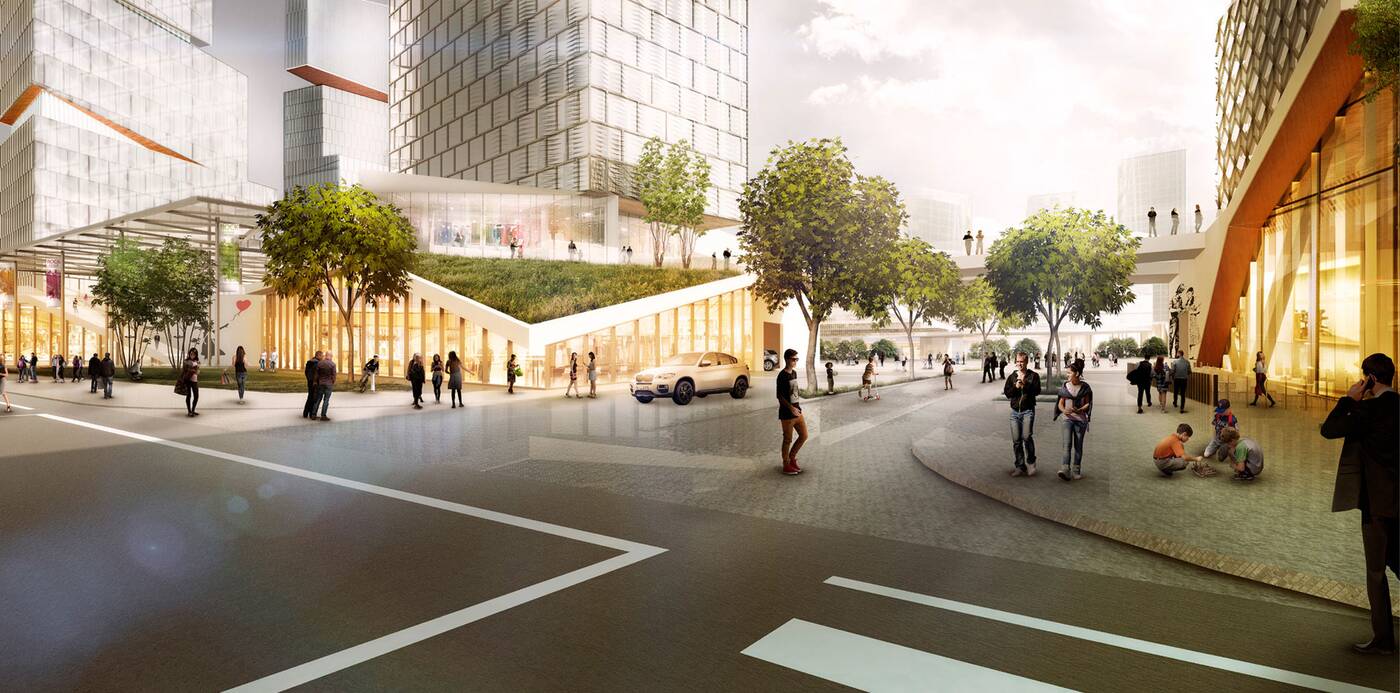
Transit also plays a major role in the district masterplan, taking advantage of its position along the future route of Metrolinx's Dundas Bus Rapid Transit (BRT) project that will act as a sort of surface subway using buses to connect almost 50 kilometres from Toronto through Mississauga, Oakville, Burlington, and Hamilton.
Sustainability is at the forefront of the masterplan, with the project targeting Leadership in Energy and Environmental Design (LEED) standards through a range of innovative measures intended to reduce energy consumption and carbon emissions.
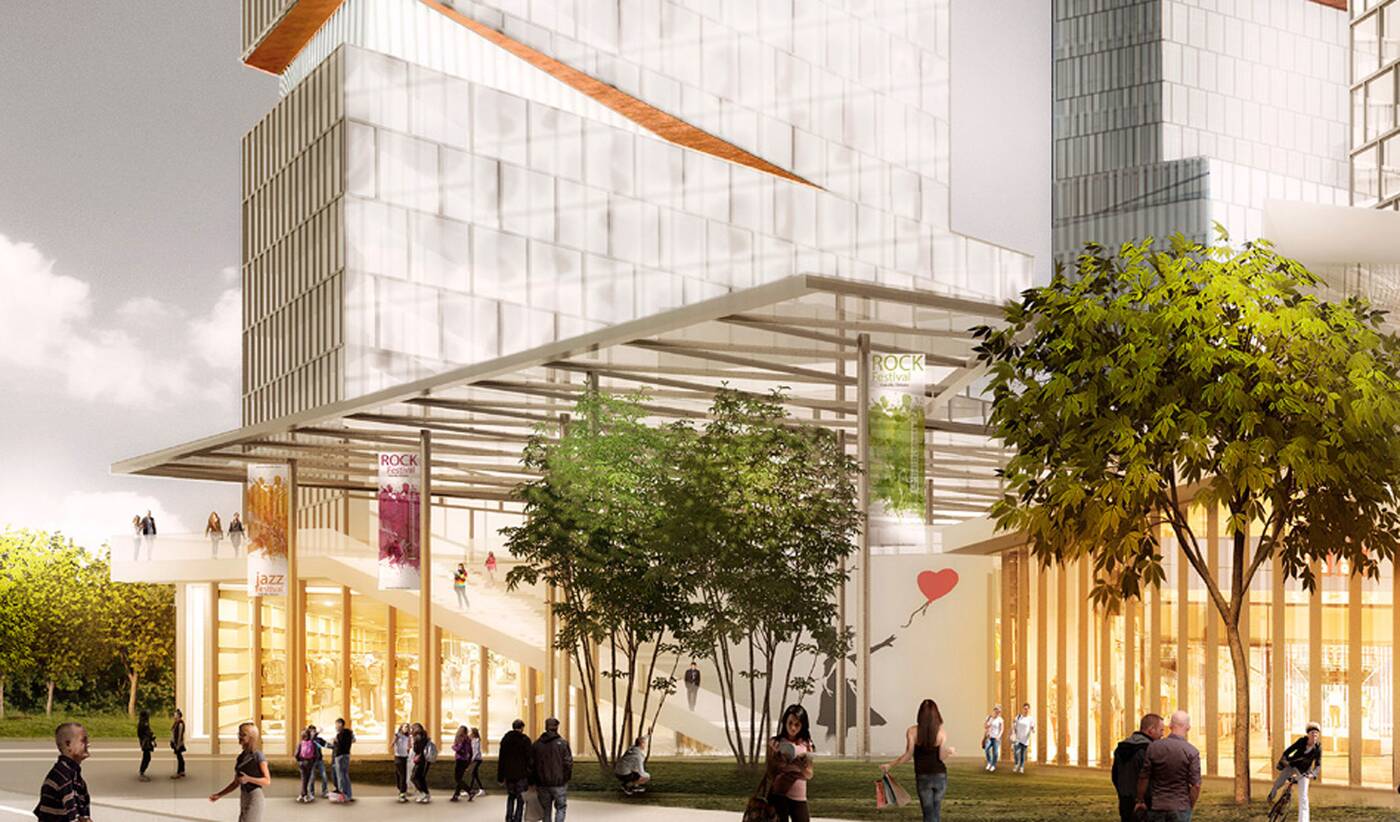
Several existing sustainable technologies are being explored, including passive design of buildings and infrastructure, synergy storage solutions, photo-voltaic and thermal-solar heating, solar shading devices, natural ventilation, and daylighting, all in an effort to attain a net-zero footprint.
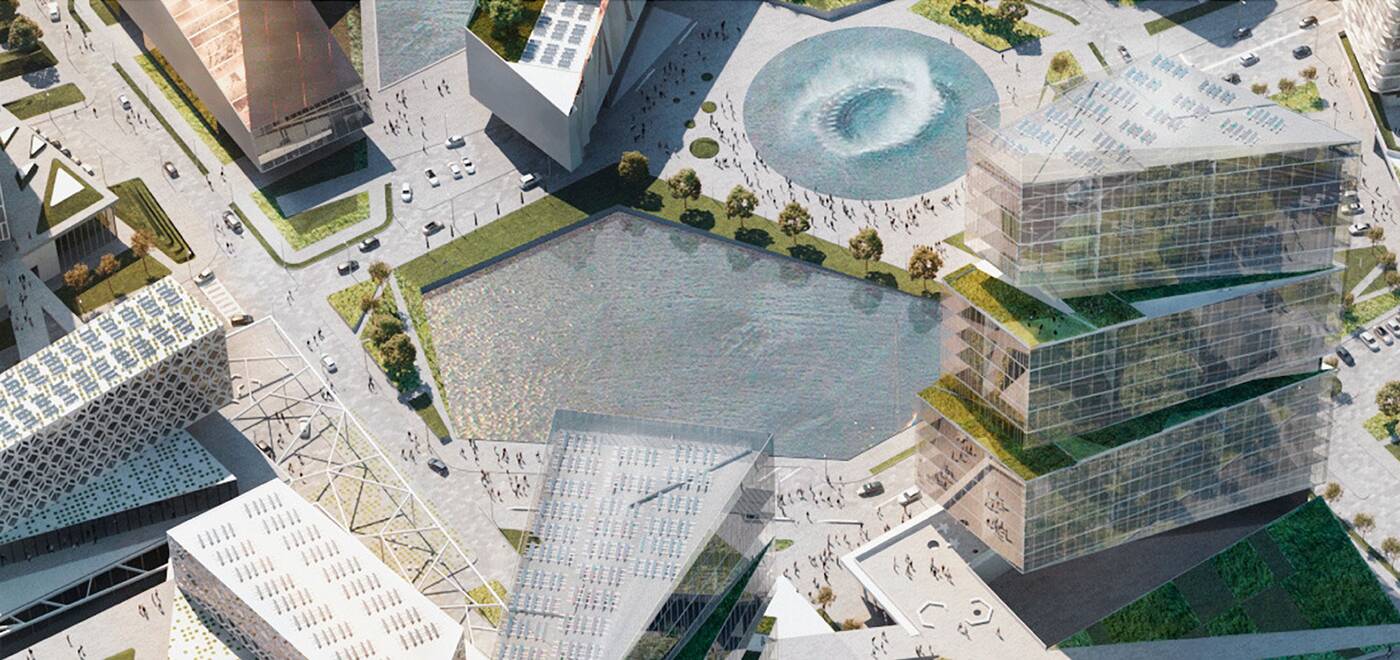 The existing stormwater retention pond is transformed into a central feature of the community, part of a large central square that will be the main communal space.
The existing stormwater retention pond is transformed into a central feature of the community, part of a large central square that will be the main communal space.

This central square is just one of several diverse amenities and interconnected public spaces envisioned to keep the community feeling lively.
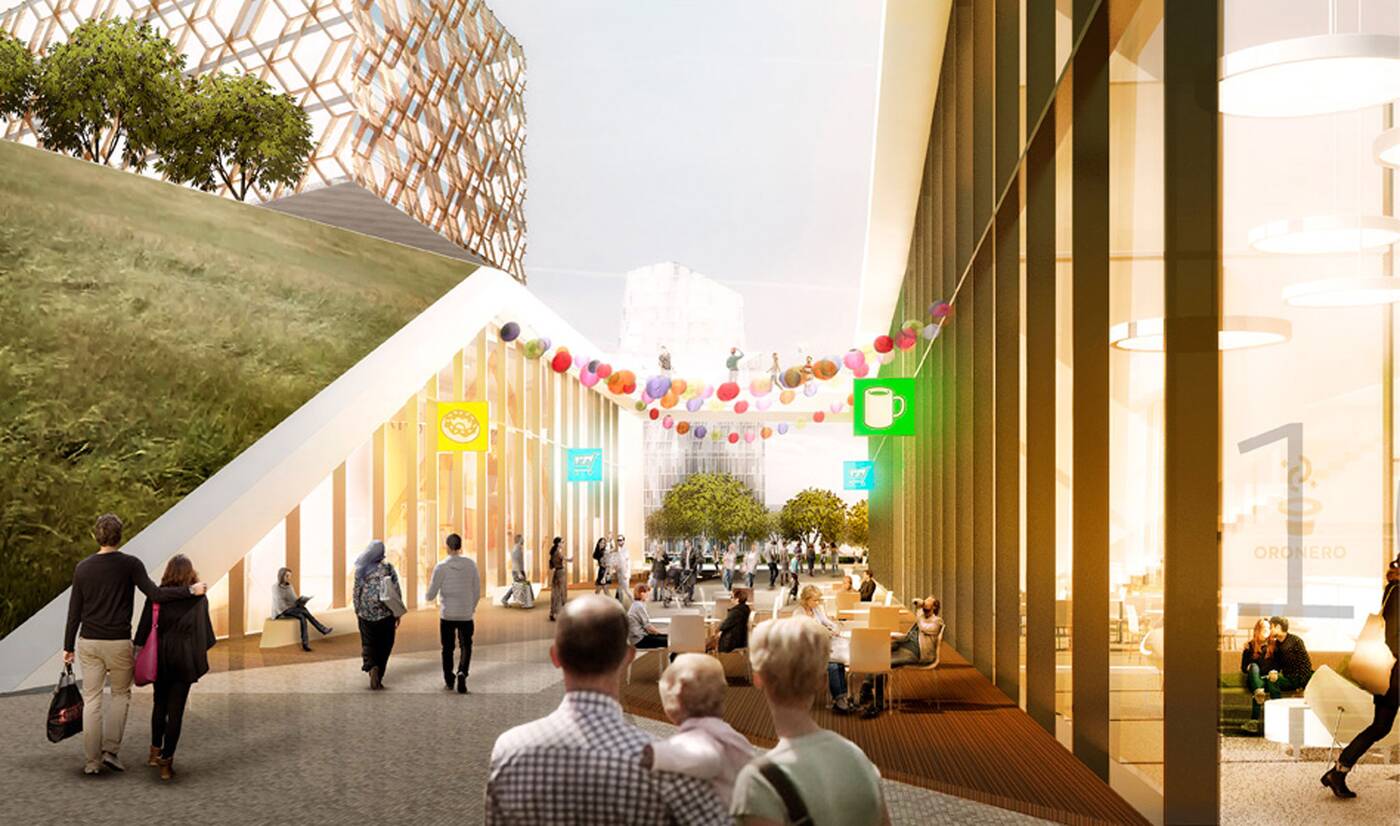
A phasing diagram details how the project would be realized in three separate phases, starting with a first phase offering 2.5 million square feet, intended to be operational by 2024.
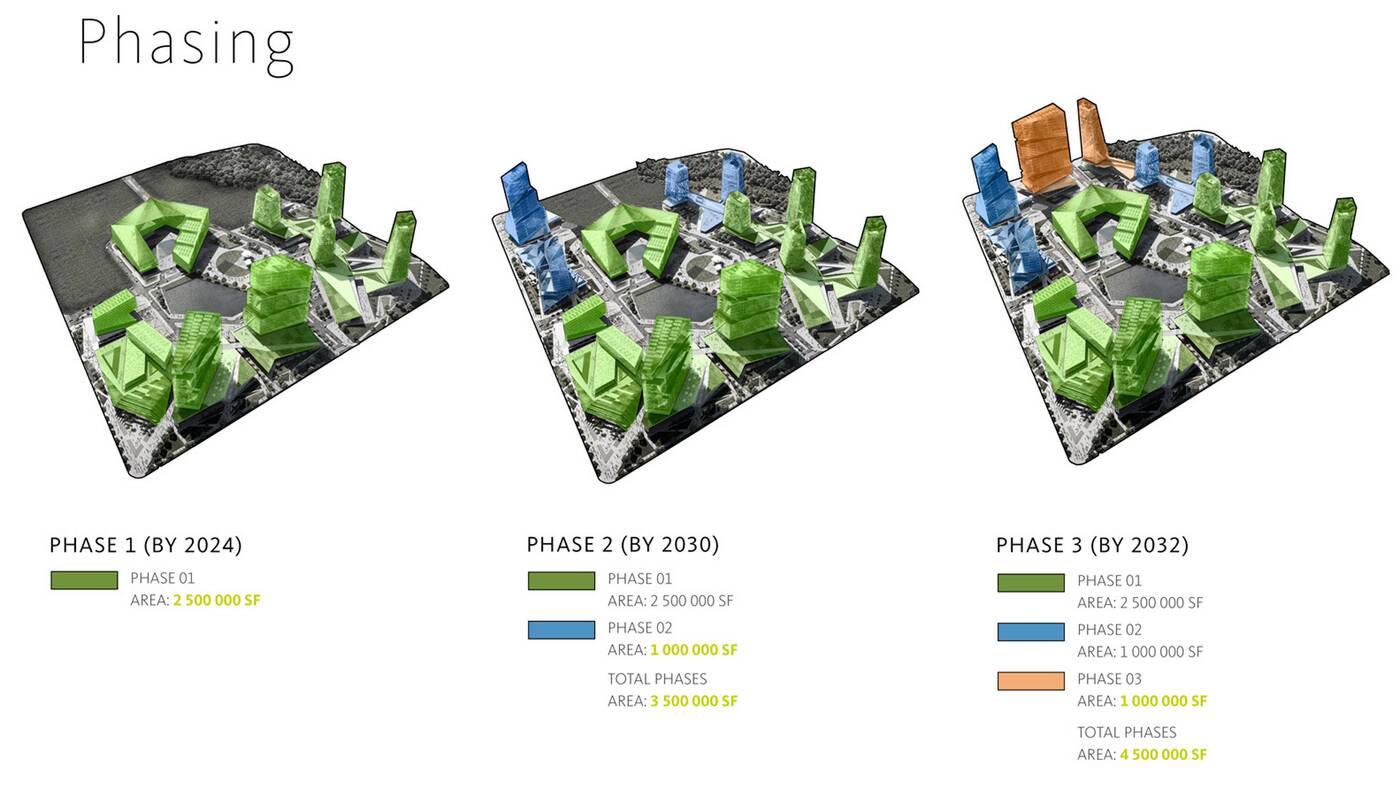
The second phase is expected to add an additional one million square feet by 2030, with a final phase adding another 1.5 million square feet by 2032, for a total of 4.5 million square feet.
Latest Videos
Latest Videos
Join the conversation Load comments







